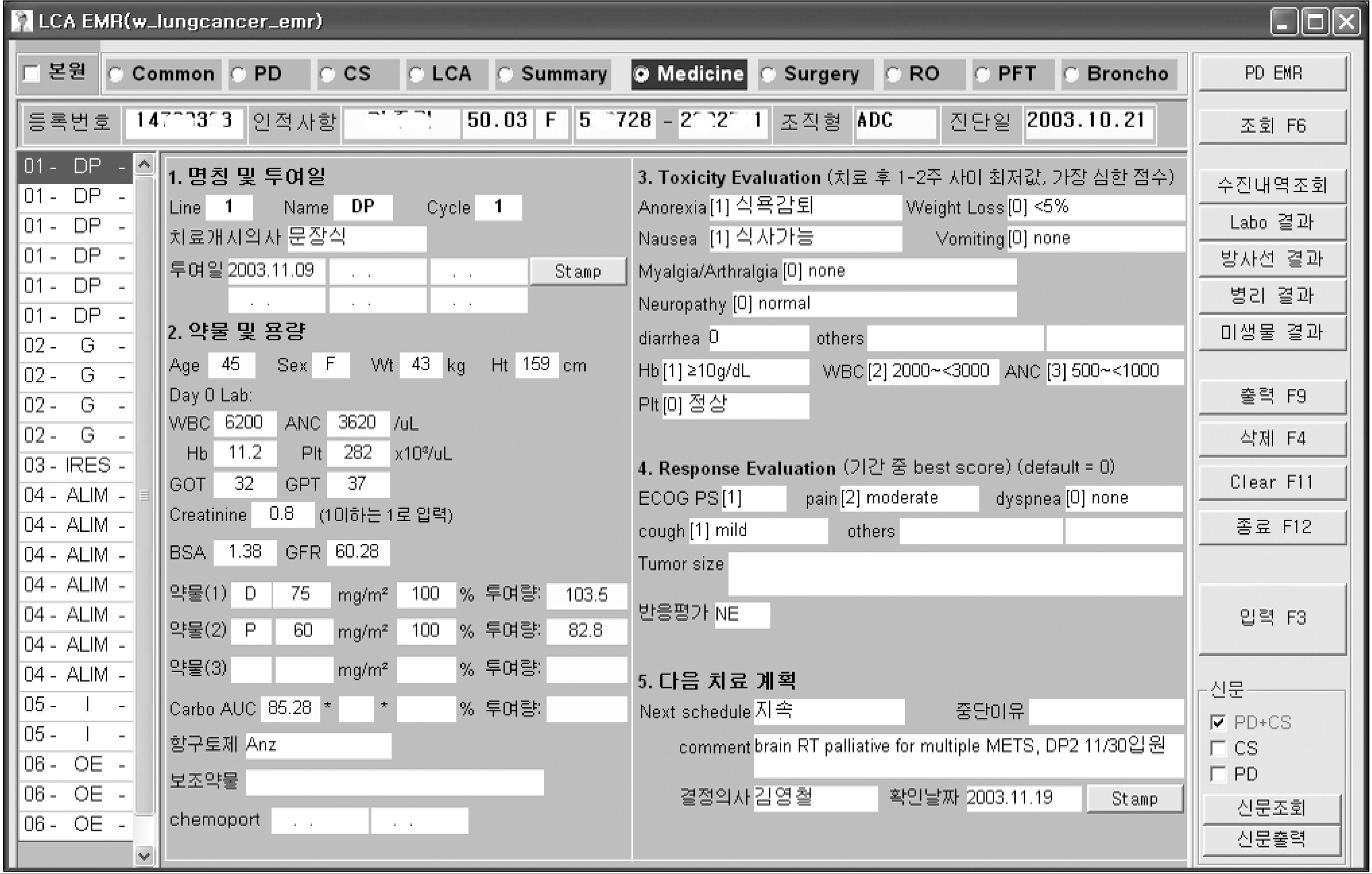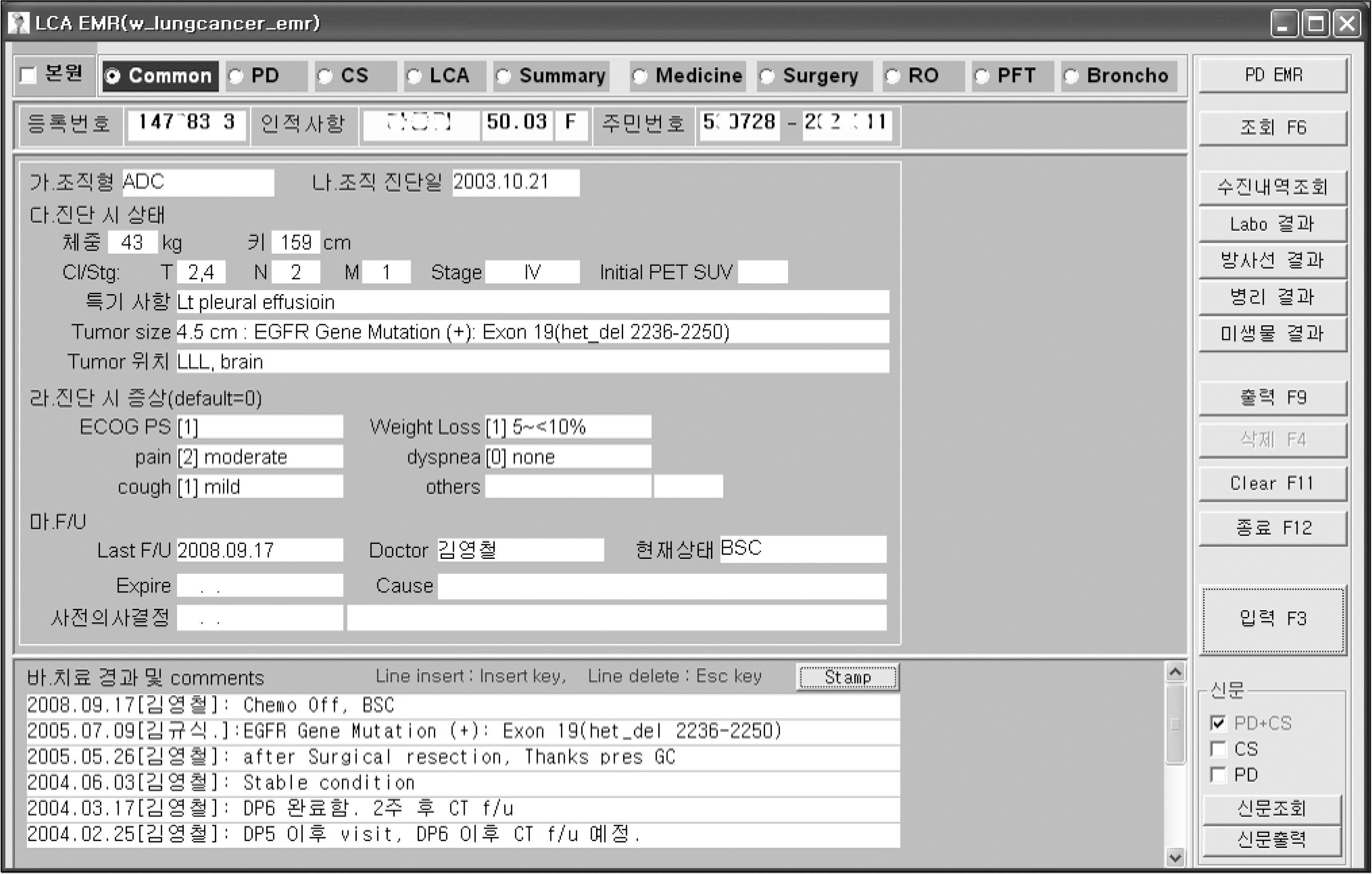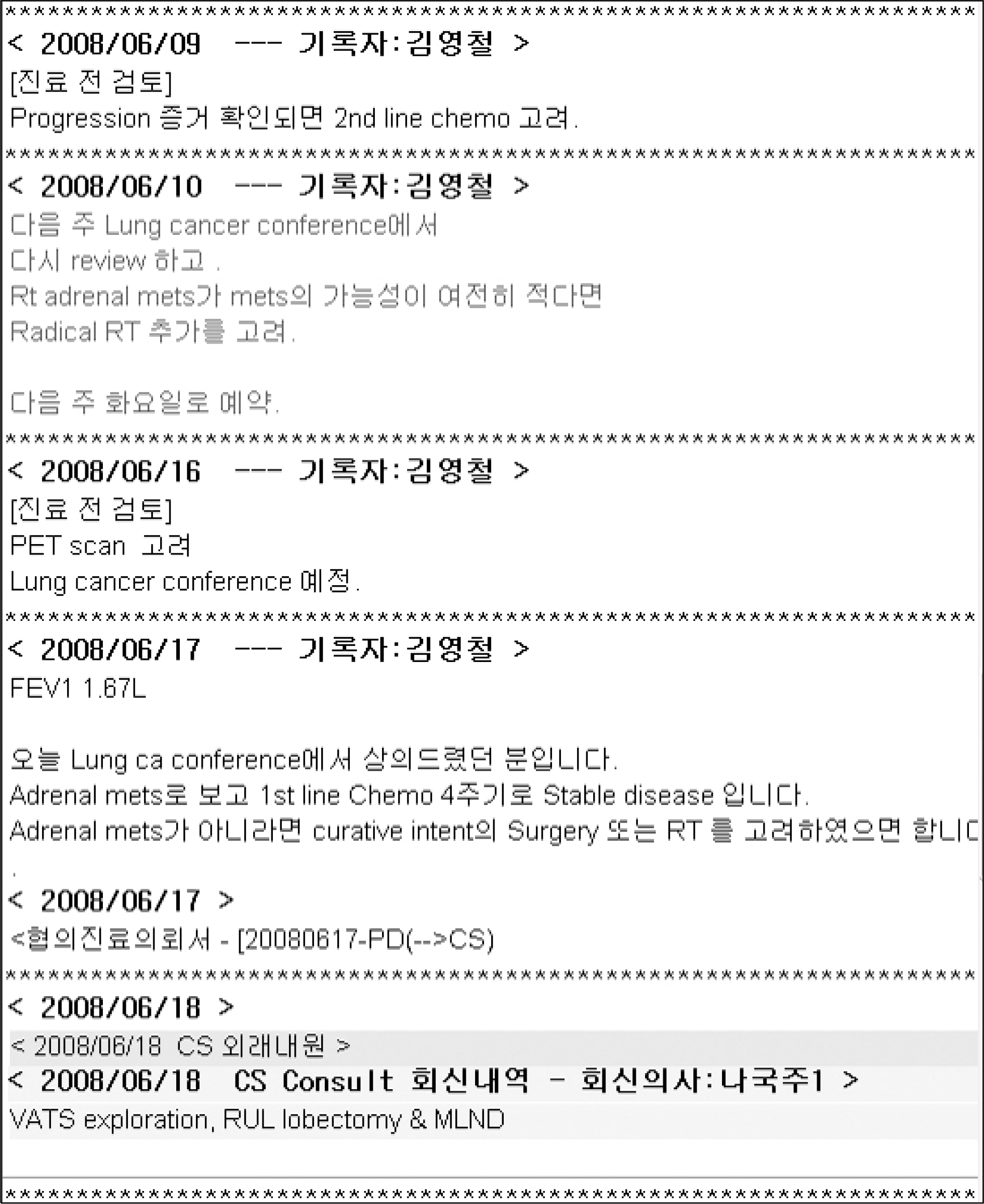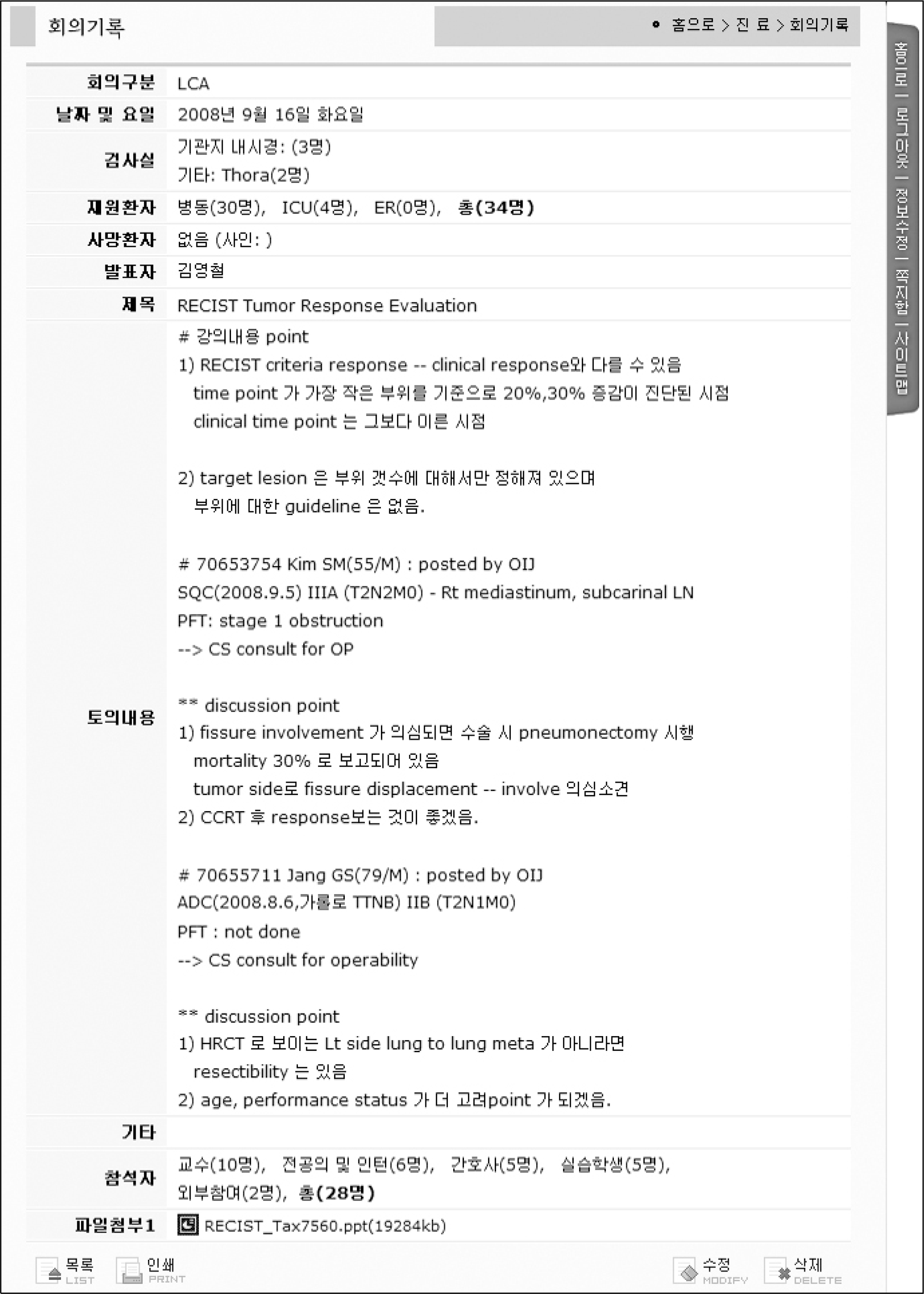Abstract
Purpose
Since the year 2000, lung cancer has been the leading cause of cancer death in South Korea and also in many other parts of the world.
Materials and Methods
We developed a multidisciplinary (MD) care system for lung cancer patients in 1996. Here, we report the results obtained in the process of development of MD team (MDT).
Results
The MDT was launched with including medical doctors, chest surgeons, radiation oncologists, radiologists, nuclear medicine specialists and physician assistants. To facilitate cooperation between the MDT members, a specialized outpatient clinic was located within a sector of the hospital. A common ward was allocated for lung cancer patients regardless of the department of the attending physician. Shared electronic medical record forms that were specialized for lung cancer were developed. The MDT operates weekly lung cancer conferences and multidisciplinary outpatient clinics. To make diagnostic or therapeutic decisions early on, the electronic medical records of the patients were previewed or consulted by the specialists before they meet the individual patients.
Conclusion
Despite every effort, we still need to shorten the waiting time from presentation to the first treatment and we need to improve the patients’ satisfaction. We also have a mission to develop our own regulations and guidelines for our lung cancer MD care system. Clinical trials and basic research should also be encouraged along with improving the quality of life of the team members.
References
1. Kim KS, Park ES, Kim SS, et al. A shared electronic medical record for lung cancer clinic. Tuberc Respir Dis. 2005; 59:480–486.

2. Lim JH, Ban HJ, Oh IJ, et al. Clinical characteristics of lung cancer diagnosed in Chonnam National University Hospital (CNUH) since 2000. Tuberc Respir Dis. 2006; 61:427–432.
3. Coory M, Gkolia P, Yang IA, Bowman RV, Fong KM. Systematic review of multidisciplinary teams in the management of lung cancer. Lung Cancer. 2008; 60:14–21.

4. Calman KC, Hine D. A policy framework for commissioning cancer services: a report to the chief medical officers of England and Wales. London: Department of Health and the Welsh Office;1995.
5. British_Thoracic_Society. BTS recommendations to respiratory physicians for organising the care of patients with lung cancer. The Lung Cancer Working Party of the British Thoracic Society Standards of Care Committee. Thorax. 1998; 53:S1–8.
6. Alberts WM, Bepler G, Hazelton T, Ruckdeschel JC, Williams JH Jr. Lung cancer. Practice organization. Chest. 2003; 123:332S–337S.
Figures and Tables
Fig. 2.
Summary of the medical treatment from the structured electronic medical records for lung cancer.

Table 1.
Number of Specialists from Various Disciplines in Year 1996 and 2008
| Number of specialists | 1996 | 2008 |
|---|---|---|
| Pulmonary medicine | 1 | 3 |
| Chest surgery | 1 | 2 |
| Radiation oncology | 1 | 2 |
| Radiology | 1 | 2 |
| Pathology | 1 | 2 |
| Nuclear medicine | 2 | |
| Physician assistant | 2 | |
| Sum | 5 | 15 |
Table 2.
Annual Statistics of Lung Cancer in Chonnam National University Hwasun Hospital
| Year / Number | 2004 | 2005 | 2006 | 2007 |
|---|---|---|---|---|
| Newly diagnosed patients* | 621 | 652 | 765 | 866 |
| Bronchoscopy | 423 | 633 | 777 | 924 |
| Image guided needle biopsy | 49 | 80 | 133 | 153 |
| Curative surgery | 46 | 64 | 70 | 91 |
| Radiation therapy | 160 | 249 | 256 | 283 |




 PDF
PDF ePub
ePub Citation
Citation Print
Print






 XML Download
XML Download